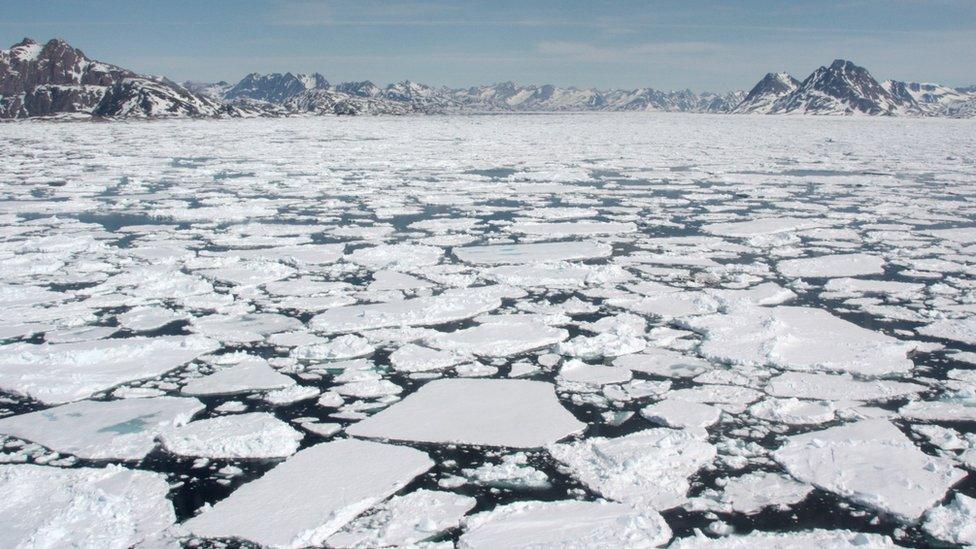World Walrus Day: Find out more about the Arctic icons
- Published
- comments

Thursday 24 November is World Walrus Day.
Complete with big white tusks, huge bodies and a bushy moustache, walruses are easily recognisable.
They're usually found in the cold and frosty regions of the Arctic Circle.
24 November has been the day of the walrus since 2008, when The World Wildlife Foundation (WWF) declared it World Walrus Day.
It's a day to recognise and raise awareness of these Arctic mammals.
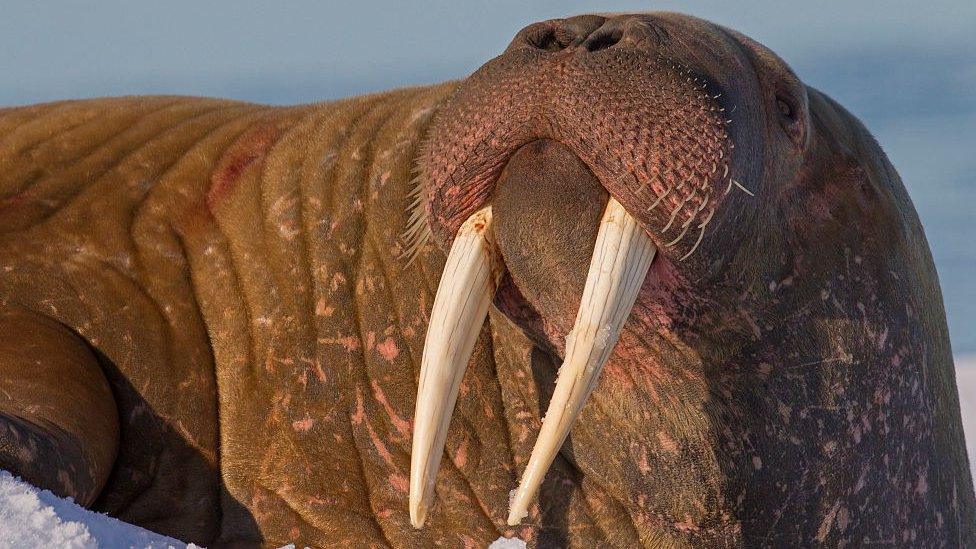
Close-up portrait of a male walrus with its distinctive white tusks, they are an iconic species of the Arctic
'Walrus are an iconic species... and their future's are at risk'
Walruses are marine mammals and are very social creatures. They'll haul-out on beaches to rest in large groups. Males can weight up to 1500kg.
Despite their large size, walruses can move surprisingly fast on land. Running on all fours like a dog, they can run about the same speed as a human being.
Both the males and females have tusks which they use to help them to get onto slippery sea ice, as well as for fighting off other walruses... and predators, like polar bears and orca.
Walruses can change colour.
While they mostly appear as a cinnamon brown, they can appear white after diving or pink when too warm as their blood vessels dilate.
There are two subspecies of walrus; the Atlantic walrus and the Pacific walrus. Estimates suggest there are more than 25,000 Atlantic walrus, with more than 5,000 of those estimated to be found Svalbard.
But conservationists are worried about the walruses' Arctic home which is warming almost three times faster than the rest of the world.
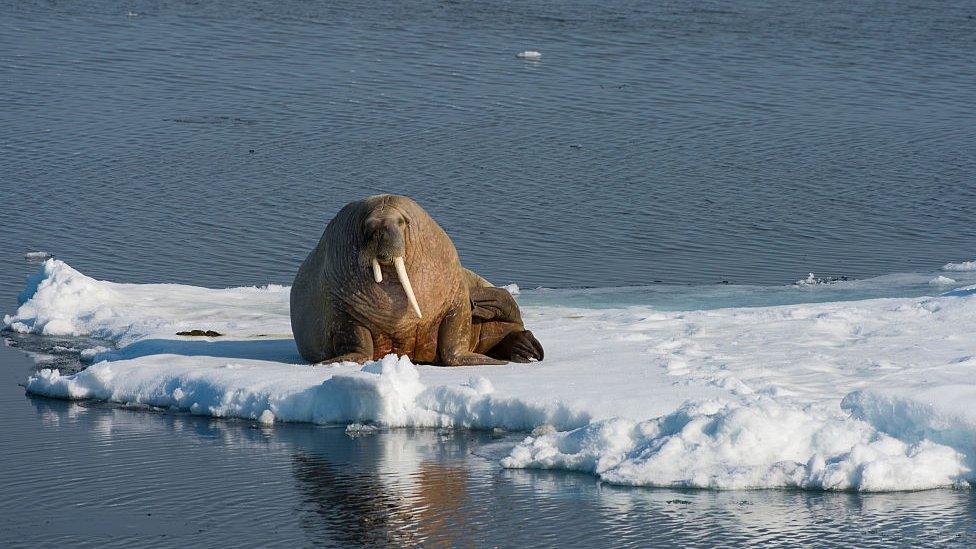
A walrus is resting on ice north of Svalbard, Norway. Sea ice is really important for walruses. They use it for resting and for giving birth to their young.
As sea ice declines due to climate change, more walruses are forced to find somewhere to rest on land. But resting on land instead of sea ice also means that the animals will have to swim further and use more energy to reach their food.
"Walrus are an iconic species of the Arctic and a key species in the Arctic marine ecosystem... yet they are also living on the frontline of the climate crisis and their futures are at risk.
To better understand what these animals are going through, on this World Walrus Day scientists are inviting people to get involved in their 'Walrus from Space' project which began recruiting volunteers last year.
The task involves a team of 'walrus detectives' searching and counting walrus using satellite images by space and intelligence company Maxar Technologies' DigitalGlobe.
The data will then help conservationists work out how populations are changing in the face of the climate crisis.
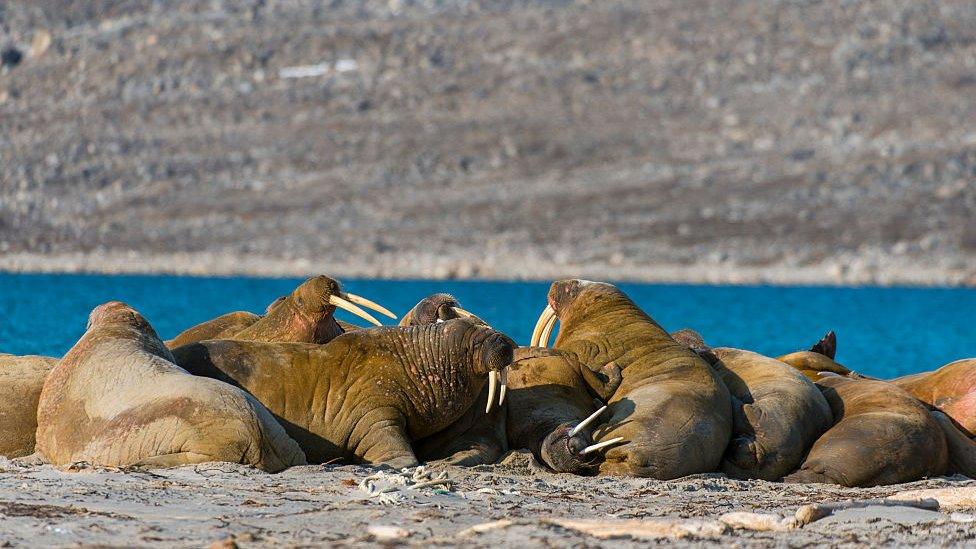
Walruses live in a remote region but by using satellite technology conservationists are asking for the public's help from the comfort of their own homes to count them
"We know they are increasingly vulnerable to the implications of climate change," said WWF's Rod Downie.
"What we are trying to do is better understand walrus, how they are responding to the climate crisis now and how they might respond in a climate altered future. We are doing this to provide evidence to support the conservation of the species across its range."
With average temperatures rising 4C in the Arctic since the 1970s, it's the fastest warming region on Earth, so with this research and support from the public, scientists hope they can learn more about the threat this species faces and what can be done to better protect them in the future.
- Published14 October 2021
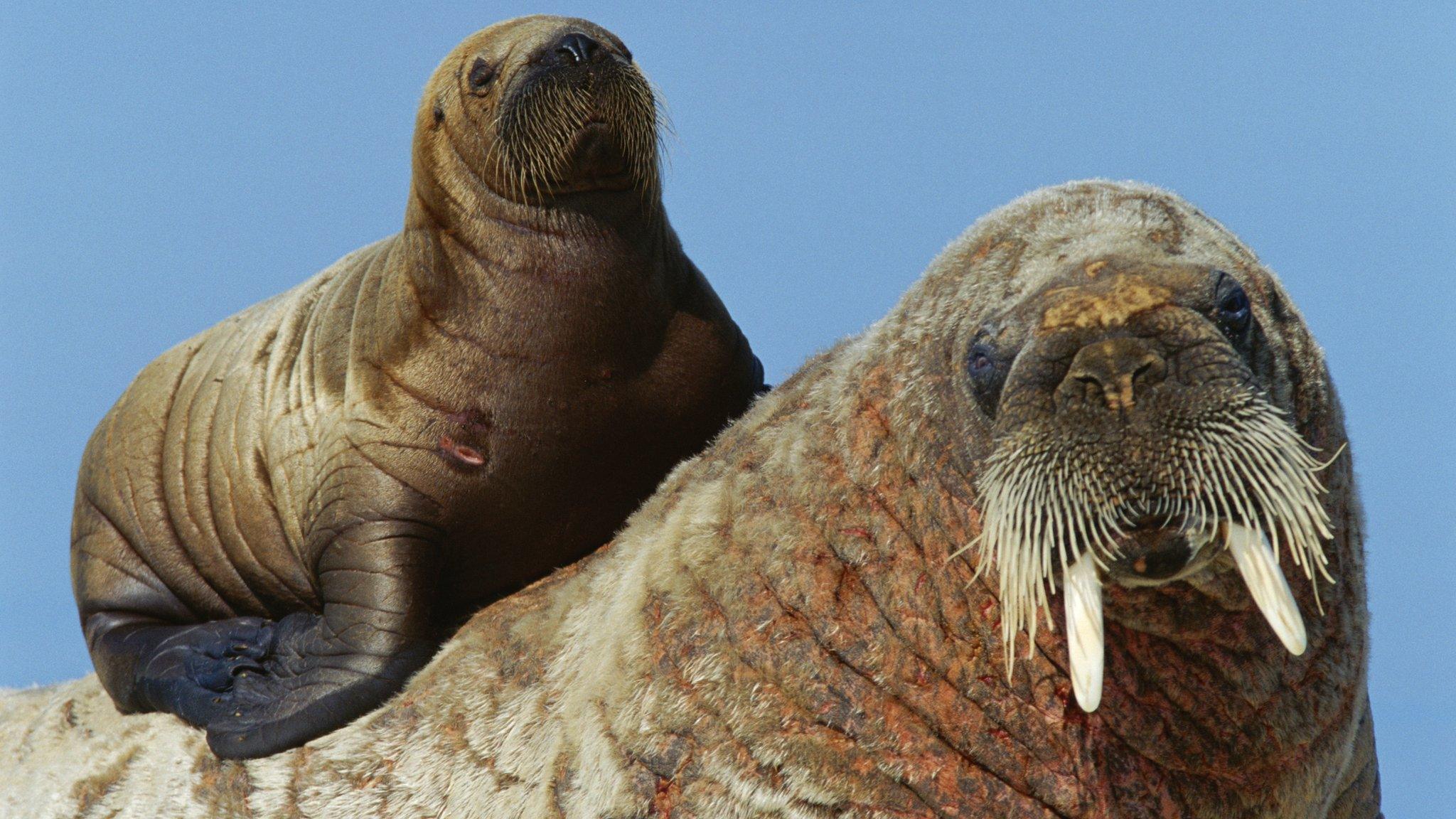
- Published30 March 2021
